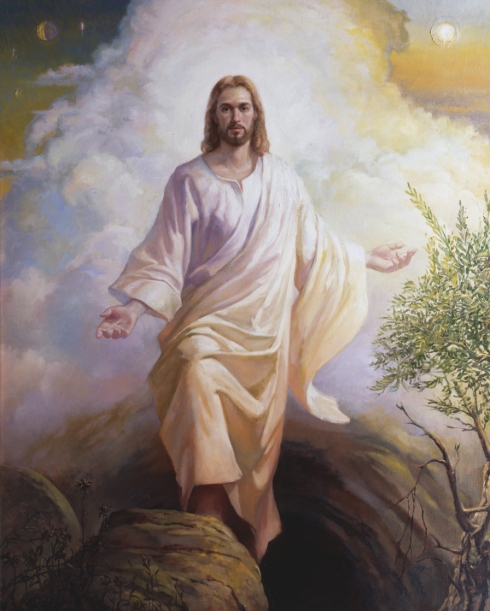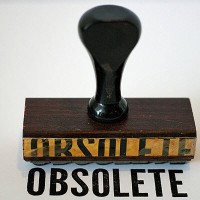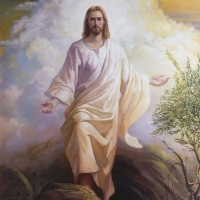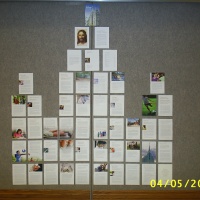My name is Simon, the son of Jonah. My brother is Andrew. He and I were fishermen from Galilee turned fishers of men by Jesus of Nazareth. You probably know me better as Peter (Cephas). The Savior gave me this name as we stood before the idol-encrusted banks of Caesarea Philippi. I had just born witness of His divinity as the Christ—our promised Messiah, the long-awaited Savior of the world—the Son of God. The Holy Spirit had testified to me of His divinity on many occasions, and within the week He bestowed the Keys of the Kingdom upon me. He gently tutored me and prepared me to become His Chief Apostle. The scriptures recount some of my mortal weaknesses, but they also tell of how I overcame them and was made strong by my faith in Jesus Christ.
Today I want to share with you my experience with Jesus the Christ during “The Greatest Week in History”, His final week in mortality. Without the events of that week, particularly those which took place in the Garden of Gethsemane and at the time of the resurrection, everything else is virtually meaningless.
Unfortunately, much of the world has created an Easter season that is meaningless. A bunny has replaced a God and eggs have replaced the “good news” of the gospel. The world has taken the Savior’s Holy Day and created a holiday. In the English language there is only a one-letter difference between the words Holy Day and holiday. That one letter, an “I” in “holiday” and a “Y” in Holy Day, make all the difference when commemorating Easter. Those who make it a “holiday” will focus on the “I”, the “me”—a selfish season. The one who makes it a “Holy Day” will focus on the “Y”, the “W-H-Y” of this season—a Savior-centered reason for the season. My purpose in sharing the Easter story with you is to inspire you to preserve it a Holy Day.
The first thing that you need to know is that Jesus Christ lives! And because He lives, we shall live again also. “Death is conquered, Man is free. Christ hath won the victory!” The events of Jesus’ final week comprise 33% of the four Gospels and 15% of the entire New Testament. During the next few minutes, I will share with you some of these events in an attempt to center your attention to the true meaning of Easter, increase your testimony of our Lord Jesus Christ, and deepen your conversion to His gospel.
That significant week began as none other I had ever experienced. We had spent three years together, but I had never before seen such a reception for the Master. It was during Pesach—the Passover season as you refer to it in English. Jerusalem was filled with the faithful who had made the pilgrimage to Jerusalem to celebrate the holy feasts. On this particular Sunday, the first day of the greatest week in history, the Savior left the small village of Bethany, where he had spent Saturday, the Sabbath, with our friends Mary, Martha, and Lazarus. We ascended the slopes leading toward Jerusalem, less than three miles away. Near the village of Bethphage, the Lord stopped and had us bring a colt that was prepared for His Triumphal Entry to the Holy City—just as the prophet Zechariah had foretold. “A very great multitude” had come out to greet the Master, spreading their garments and branches of trees before Him and crying, “Hosanna to the Son of David: Blessed is He that cometh in the name of the Lord; Hosanna in the highest.” All of these acts were symbols of reverence, and the use of the title “Son of David” indicated that the multitude accepted Jesus as their long-awaited Messiah, for this was the sacred title reserved for the Savior. Their shouts of “Hosanna” (“Save now”) were misdirected as they thought more on their temporal deliverance than on their spiritual salvation. He was indeed their King and Savior, but not the king they had expected—Jesus was never what we expected Him to be, but He was always what His Father expected Him to be. The tragic mistake made by the believing Jews at that time was that they expected the Savior to do at His first coming some of the things that He was to do at His Second Coming. They almost certainly expected Him to ride on His royal colt toward the Antonia Fortress or Herod’s Palace and assume His rightful place as ruler of Israel. Instead, He went directly to the Holy Temple and took note of what He saw.
It was not until later in the week, after the Savior had made such statements as “Render … unto Caesar the things which are Caesar’s” and “My kingdom is not of this world” that the people were to change their cries from “Hosanna to the Son of David” to “Crucify him!” It was not until later in the week that the believers among the common people felt He had betrayed them; therefore they agreed to betray Him.
Early the next morning we returned with Jesus to the Holy Temple. This time He made a decisive drive calculated to challenge the Jewish religious leadership. He drove from the outer court of the temple those who were trading and making money exchange from foreign currency. The money exchange was sanctioned by the Jewish leaders; and by preventing the merchandising, Jesus was in effect challenging their leadership. The issue was clear: Was the temple to be a place to worship God or to pursue gain? As he cleared the temple courts, he said, “It is written, My house shall be called the house of prayer; but ye have made it a den of thieves”. It was three years to the week from the first time the Savior had driven the money changers from the temple. On that occasion, he had accused them of making his “Father’s house an house of merchandise.” On this occasion, now that he has openly avowed himself to be the Messiah, the Savior refers to the temple as “my house” when he quotes the scriptures. Before the week was over, the Master said to the rebellious residents of Jerusalem concerning the temple, “Behold, your house is left unto you desolate.” His shift in the words showing possession is noteworthy. As He taught us in the temple, the blind and the lame came unto Him and He healed them. That evening we returned again to Bethany.
Jesus’ actions and teachings in the temple raised the issue of authority, and both the secular and religious leaders felt threatened. They determined they would challenge Him and discredit Him in the eyes of the people. They spent their time devising taunting questions with which they desired to disgrace Him. The priests challenged him: “By what authority doest thou these things? and who gave thee this authority?”. Jesus responded by relating a series of parables that offended them. The scribes and Pharisees challenged him with similarly snide subjects. The Savior turned questioner and asked them: “What think ye of Christ? whose son is he?” Their prompt reply was, “The Son of David.” He responded, “How then doth David in spirit call Him Lord. … If David then call Him Lord, how is He his son? And no man was able to answer Him a word, neither durst any man from that day forth ask Him any more questions.” The Savior then turned to us, in the hearing of the multitude, and told us of the false teachings and practices of the scribes and the Pharisees. He frequently used the word hypocrite— a word meaning “actor on a stage”—in referring to the self-assumed teachers, and he concluded His condemnation by referring to them as “serpents” and a “generation of vipers.” The Savior then lamented over the great city of Jerusalem, reminding the people of the many prophets who had been sent to this area, and how frequently the people had rejected these prophets. He also pronounced the destruction that was yet to come upon the people and upon the temple, stating “there shall not be left here one stone upon another.” Perceiving that Jesus had gained the upper hand, the Jewish leaders consulted again how they might bring about His death. They would have to move quickly before the Passover to avoid a riot, however, since Jesus had become very popular with the Jewish people. How to bring about an arrest without provoking crowd reaction was the problem. An unexpected turn of events that took place supported their plot—one of Jesus’ own Apostles offered to betray Him. Next, the Savior went to the Mount of Olives where we met with Him privately and asked Him to explain His prophecies concerning the destruction of Jerusalem and the ensuing events that were to follow until the end of the world. After answering our questions, the Savior concluded His teachings with three parables intended to help us prepare for His Second Coming. We then returned with the Savior to Bethany and He prepared for His trying ordeal ahead.
Jesus knew of the plot that was unfolding in Jerusalem and we spent the next day away from the city.
Sometime during the following day (we assume) Judas Iscariot plotted with the chief priests and the Pharisees to betray the Master and deliver Him into their hands. Jesus had arranged to commemorate the Passover meal in a home privately reserved for us. Here Jesus prophesied of His death. Here it was revealed that Judas Iscariot should be the one who was to betray Him. Here the sacrament of the Lord’s Supper was instituted. Here the Savior washed our feet and asked us to continue to perform this ordinance. The Savior reminded us that He was soon to leave us, yet He would not leave us comfortless but would send us the “other Comforter,” the Holy Ghost. Leaving the upper room with the eleven (Judas had already left) Jesus led us outside the walls of Jerusalem to a familiar spot on the Mount of Olives—Gethsemane, the olive press—one of God’s great gardens. This is where one of the most important and transcendent events in the history of the world occurred. It was here that He atoned for the original transgressions of “Father Adam, the Ancient of Days and father of us all, and our glorious Mother Eve”, and it was here that He took upon Himself the sins of all mankind upon the condition of repentance. The events in the Garden of Gethsemane that evening and what happened in the next three days were so significant that the Savior exclaimed, “… for this cause came I unto this hour.” After some instructions, Jesus offered His great intercessory prayer on our behalf. Then taking me, James, and John, He went further into the Garden where He then left the three of us and went off by Himself to pray. There He pled with His Father, “let this cup pass from me: nevertheless not as I will, but as thou wilt.” The cup did not pass and Jesus suffered “the pain of all men”, an agony so excruciating that it caused Him to bleed at every pore. It was during His time of great suffering that I and my brethren succumbed to weariness and were not able to wait, and pray, and watch with Him in His time of need. Some time later Jesus returned to us and indicated that His betrayer was at hand. While He spoke, the Savior was met by Judas and “the chief priests, and captains of the temple, and the elders” who had come to take Him to trial. I tried to deliver Him from their hands, but the Savior rebuked me and faced His future with faithfulness. I followed from a distance as I witnessed the awful events of that night which included an illegal trial before the high priest (Caiaphas) and the Jewish high council (the Sanhedrin), where He was first charged with sedition (a disturber of the peace) and then accused of blasphemy (falsely assuming the power of God), which was the most serious charge in Jewish law. When He was asked directly, “Tell us whether thou be the Christ, the Son of God”, His answer was clear, “I am.” The apostate high priest cried out, “He hath spoken blasphemy; what further need have we of witnesses? … He is guilty of death.” Thus, one of the greatest ironies in history occurred, for Jesus, the divine Son of God, the one person who could not have been guilty of falsely assuming the power of God, was found guilty of blasphemy! And the only person since the fall of Adam who had power over physical death was condemned to die! However, the power to pronounce capital punishment had been taken away from the Jewish council by Roman decree; thus the leaders of the Sanhedrin had Him delivered to Pilate so an official decree of death could be issued. It was during this time that I suffered one of the most difficult moments of my life. I “wept bitterly” when the Lord looked upon me as His prophecy that I would deny Him thrice before the cock crowed was fulfilled.
The ensuing morning, the Savior was brought to trial before Pontius Pilate, the procurator of Judea who lived in Caesarea but who happened to be in Jerusalem for the Jewish feasts of Passover. Pilate came outside to hear their charges. The charge was now changed from blasphemy to high treason, the most serious offense in the Roman law. To back their charge of treason against the Savior, the members of the Sanhedrin falsely claimed the Master had forbidden the people to give tribute to Caesar (His actual words were, “Render unto Caesar the things which are Caesar’s”), and they also accused Him of making Himself a king. When Pilate asked the Savior directly, “Art thou the king of the Jews?” the Savior answered, “My kingdom is not of this world”. Thus finding “no fault” in Him, Pilate was about to let Him go free when one of the priests claimed that Jesus had been teaching treason “beginning from Galilee to this place.” As soon as Pilate was reminded that Jesus was a Galilean, he sent the Savior to be tried by Herod, the vassal ruler of the province of Galilee, who was also in Jerusalem for the Pesach season. However, the Savior refused to answer any of the questions put to Him by Herod—He would not put on the show that Herod desired. So Jesus was taken again before Pilate by the members of the Sanhedrin, who were determined to have a death sentence pronounced against Him. Pilate could still find no fault in the Master and so declared, “I will … chastise him, and release him.” Pilate also reminded the Jews that it was the custom during the Passover season to release one of the prisoners from prison and that he was willing to release the innocent Jesus. However, the people cried, “Release … Barabbas” (whose name, Bar Abbas, means, “son of God”); thus a murderer and one guilty of sedition was released, while the innocent and literal Son of God was retained. When finally Pilate asked the people what they wanted him to do with Jesus, their awful cry was, “Crucify him!” Pilate’s reply was that he found “no fault” in the man, and he washed his hands of Jesus’ blood (Pilate’s freshly washed hands could not have been more unclean). Then came the self-condemning cry from the crowd, “His blood be on us, and on our children.” Even then, Pilate was about to let the Savior go with a scourging and chastisement, when a person cried out the taunt, “If thou let this man go, thou art not Caesar’s friend; whosoever maketh himself a king speaketh against Caesar.” This push proved to be too much for Pilate, who had received what power he had from Caesar. Thus Pilate finally agreed to the crucifixion and turned Jesus over to his soldiers to be scourged and crucified. Then followed the torturous walk to Golgotha, where the tired, physical body of the Savior was given the assistance of another Simon, that of Cyrene, in carrying the cross. Pilate had earlier ordered that the words “JESUS OF NAZARETH THE KING OF THE JEWS” should be inscribed on the cross in Hebrew, Greek, and Latin. When the Jewish leaders tried to get him to change the inscription from “The King of the Jews” to “he said, I am King of the Jews,” Pilate replied: “What I have written I have written.” It was about 9:00 A.M. when the Savior was nailed to the cross. Despite the piercing pain of the nailing, the Savior could still look upon the Roman soldiers and say, “Father, forgive them; for they know not what they do.” About noon a great earthquake occurred, which among other things tore the veil of the temple. The light of the sun was also hidden, and there was darkness until 3:00 P.M. It was then that the Savior cried out, “It is finished”. And so Jesus was executed by the brutal Roman practice of crucifixion through which He voluntarily gave up His spirit. Thus, the one who had been given power over death by His Father voluntarily gave up His life so that physical death could be conquered and all of us might live eternally. According to religious tradition, it was not lawful to leave a body unburied on the Sabbath. And the Sabbath, which began at sundown, was the Passover, and the Jewish leaders despised the idea that a man should remain on a cross on the Sabbath, particularly the Paschal Sabbath. Thus, as sundown approached, we took His body from the cross and promptly and partially prepared it for burial. The body was laid in the tomb offered by one of His disciples, Joseph of Arimathaea. Thus ended the sixth day—the darkest day in the history of the world.
It was now the Jewish Sabbath. Jesus’ body remained in the tomb, but in spirit He ministered in the realm of departed spirits. I have written about this in the book of 1 Peter, chapters 3 & 4. The Lord also revealed to Joseph F. Smith, the sixth president of the Church in this dispensation, what actually occurred on that momentous day, which in eternity promises to be one of the most important days of all time. The Book of Mormon also tells us of some of the activities of Jesus on this seventh day when His body lay in the tomb. It was on this day that the Savior spoke out of the darkness to the survivors on the American continent. He did not appear to them on that occasion, but He spoke to them. Among many people on the earth the seventh day was a day of physical darkness, but it was only the brief darkness that was to herald the most glorious dawn in history.
“It was yet dark” on “the first day of the week” when Mary Magdalene and “the other Mary” came to the tomb of the Savior with their sweet spices to anoint His body. However, they found the tomb empty, and an angel soon explained to them why the body of the Savior was not therein: “Fear not ye: for I know that ye seek Jesus, which was crucified. He is not here: for He is risen, as He said. Come, see the place where the Lord lay. And go quickly, and tell His disciples that He is risen from the dead. …” And so the darkness and despair of His death were changed into the light and joy of His resurrection, breaking forever the bands of physical death and guaranteeing to all life after death.
What event in all history is there to compare with this? I am one of the Lord’s Special Witnesses of the His resurrection! Before the day had ended, many witnesses could testify of the reality of the resurrection, not only because of the appearances of the resurrected Christ but also because “many bodies of the saints which slept arose, And came out of the graves after His resurrection, and went into the Holy City, and appeared unto many.” The people of the Book of Mormon also had additional witnesses, for just as Samuel the Lamanite had prophesied, after the resurrection of the Savior on the eastern continent many bodies of the saints in the Americas also “did arise and appear unto many and did minister unto them.” Within the next few weeks, the resurrected Christ appeared several times, including appearances to Mary Magdalene, to the other women, to the two disciples on the way to Emmaus, to Me, to ten of the Apostles on the day of His resurrection, to the eleven Apostles (including Thomas) a week after His resurrection, to seven of the disciples on the shore of the Sea of Galilee, to the eleven Apostles on a mountain in Galilee, to more than 500 brethren at one time, and to His Apostles at the time of his ascension into heaven. The Book of Mormon tells of additional appearances of the resurrected Christ, including one appearance to 2500 persons and later appearances to even larger groups. The resurrection of Jesus Christ is one of the most carefully documented events in history, as it should rightfully be, for it was the crowning event in the most important week in the history of the world.
Had the gospel ended with Jesus’ burial, there would be no gospel story, no “good news”—no Easter “Holy Day”. The great message of these testators is that Jesus is resurrected and was seen by many, many witnesses. On the most memorable Sunday in history, Easter, Jesus Christ emerged alive from the tomb. My witness, and the testimony of these many witnesses, constitutes the gospel story, the “good news”. My fellow Apostle John listed the following reason for including in his writings the major events of the last week in the earthly life of the Savior: “… these are written, that ye might believe that Jesus is the Christ, the Son of God; and that believing ye might have life through his name.”—and we will! God be thanked for the matchless gift of His Beloved Son this Easter “Holy Day”!
Sources: www.scriptures.lds.org, Daniel H. Ludlow, “The Greatest Week in History”, Ensign April 1972









